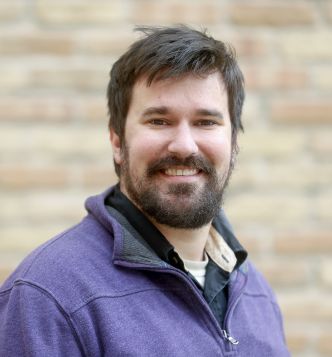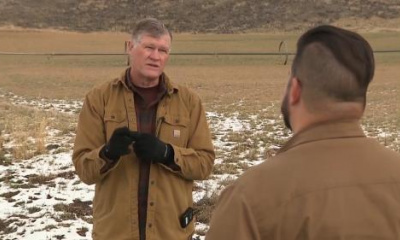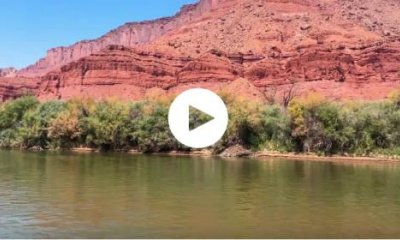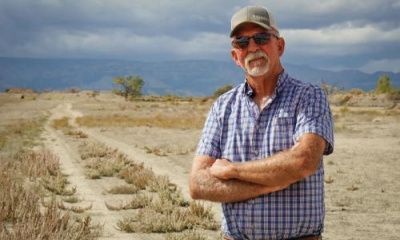SALT LAKE CITY — Cynthia Bee said it sometimes pays off to be "the lone weirdo" in a neighborhood who ditches the turf-based park strip, the patch of grass that typically exists between a street and sidewalk in front of homes, businesses and government buildings.
It turns out, all it takes is one person to do it to inspire others, especially in a neighborhood.
"I swear we're finding in every neighborhood that everyone is waiting and watching, and when they see someone do it and have a beautiful outcome ... that's what catches on," said Bee, a landscape architect and outreach coordinator at Jordan Valley Water Conservancy District. "We see it time and time again. If someone does it well, it just replicates."
This little change, she adds, is ultimately helping residents save thousands of gallons of water every year.
The push against the turf park strip
This is why there's suddenly been a strong focus on grass park strips. Getting rid of the grass here is essentially the easiest way to reduce water use without really any impact, which matters when Utah remains in severe and extreme drought categories at the start of the irrigation season.
Utah Water Savers reports that the average turf-based park strip consumes 5,000 to 8,000 gallons of water every year, even though they are only aesthetic. The amount of water they collectively consume quickly adds up given there are over 400,000 housing units in Salt Lake County alone, according to a 2019 U.S. Census Bureau estimate.
Utah lawmakers already came down hard on the turf park strip earlier this year, passing legislation to create the nation's first statewide turf buy-back program through which homeowners can be compensated for the turf they rip out and replace with water-wise landscaping. They also passed a requirement that general plans of cities and counties integrate land use planning with water as a consideration.
Lawmakers also overturned bans on xeriscaping, a style that requires little or no irrigation water. Most of the state's new laws take effect Wednesday.
The turf-based park strip was also the focus of the fourth and final Salt Lake County Council "Water Summit" on Tuesday, where Bee and other water conservation experts discussed the impact turf park strips have on water consumption and unveiled plans to reduce their impact.
What Bee told the council is she's found that there are some who are willing to test a possible solution right away while others want to wait and see a good design before they try it themselves. She said hundreds of residents have already signed up for Jordan Valley Water Conservancy District's park strip program.
This graph shows the number of enrollments in the Jordan Valley Water Conservancy District's "Flip Your Strip" program since 2018. Last year produced a record 463 applications. (Photo: Jordan Valley Water Conservancy District)
In fact, they received a record 463 program applications last year and are already on pace for more this year, indicating that there's growing interest in xeriscaping.
What's good xeriscaping?
The best xeriscaping, Bee says, has about 50% plant coverage with small plants less than 2 feet in height. Native plants are encouraged because they are generally more drought-tolerant and require less water than non-native plants.
She adds that sprinklers must also be switched to a drip irrigation system that only helps plants that need it. The sprinkler replacement is the big water saver while focusing on only the plants that need water reduces weeds often unintentionally grown through overwatering.
An example of xeriscaping in a residential neighborhood in Salt Lake County. (Photo: Jordan Valley Water Conservancy District)
A pedestrian pass-through, a little walkway in the park strip, is another option people can use to reduce damage from people walking on park strips.
Michael Shea, the county's sustainability director, said it costs about $8 per square foot to xeriscape on average. Some rebates, like the Utah Water Savers' "Flip Your Strip" program, offer up to $1.25 per square foot for qualifying residents to replace their turf park strips with more water-efficient designs.
Bee says that only has xeriscaping park strips influenced others to do the same but she's found it's also been a gateway into other conservation projects. It's something that may not work for everyone but it does matter in an ongoing drought.
"Take control of the pieces that you can," she said, noting online battles over who is to blame for water use in the state. "At the end of the day, we're all using water and we have an obligation to be as efficient as we can. It's really to (a homeowner's) benefit to have a yard that's resilient because, otherwise, every time we have a drought they're risking their landscape investment — that's pretty frequent right now."
County seeks to 'walk the walk'
Meanwhile, Salt Lake County Mayor Jenny Wilson is willing to be the weirdo Bee describes.
After Bee wrapped her presentation to the county council, Wilson's staff unveiled a $2 million proposal Tuesday for the county to rip out 132 existing park strips outside of 39 different county buildings and replace them with xeriscaping or localscaping. The measure is estimated to save more than 5.2 million gallons of water annually.
"The drought has increased our sense of urgency for water conservation, but that need already existed with Salt Lake County's growing population," Wilson said, in a statement. "Last year, we made a commitment to reduce water use and we did. This is one of many long-lasting conservation solutions that will help protect our residents' quality of life, our watershed and the future of the Great Salt Lake."
Shea explained that the buildings selected for the project were determined through a thorough process that started by looking for all unused county facilities' landscapes, specifically those that have grass.
We're hoping the biggest takeaway from this is: Yes, we're saving water, but we're also encouraging residents and businesses in the county to take the step because we're doing it, too.–Michael Shea, Salt Lake County sustainability director
They whittled down the options by looking for all the biggest park strips and parking lot islands with grass in them. What started as more than 2,000 possibilities eventually became 132 options totaling about three football fields in combined space in about 15 different municipalities.
Funding for the project would be eligible to come from American Rescue Plan Act money, according to Wilson's office.
It's ultimately up to the Salt Lake County Council to approve the request; however, Shea argues that it's important for governments to pitch in with water conservation, especially if they are asking residents for help. He contends it can dissuade residents from xeriscaping or localscaping if they look down the street and see a turf-based park strip outside of a library or a park that's watered all the time.
"That's a huge incentive. We need to walk the walk in addition to encouraging residents," he said. "I think that's probably the most impactful (aspect) of what we're doing. ... We're hoping the biggest takeaway from this is: Yes, we're saving water, but we're also encouraging residents and businesses in the county to take the step because we're doing it, too."









